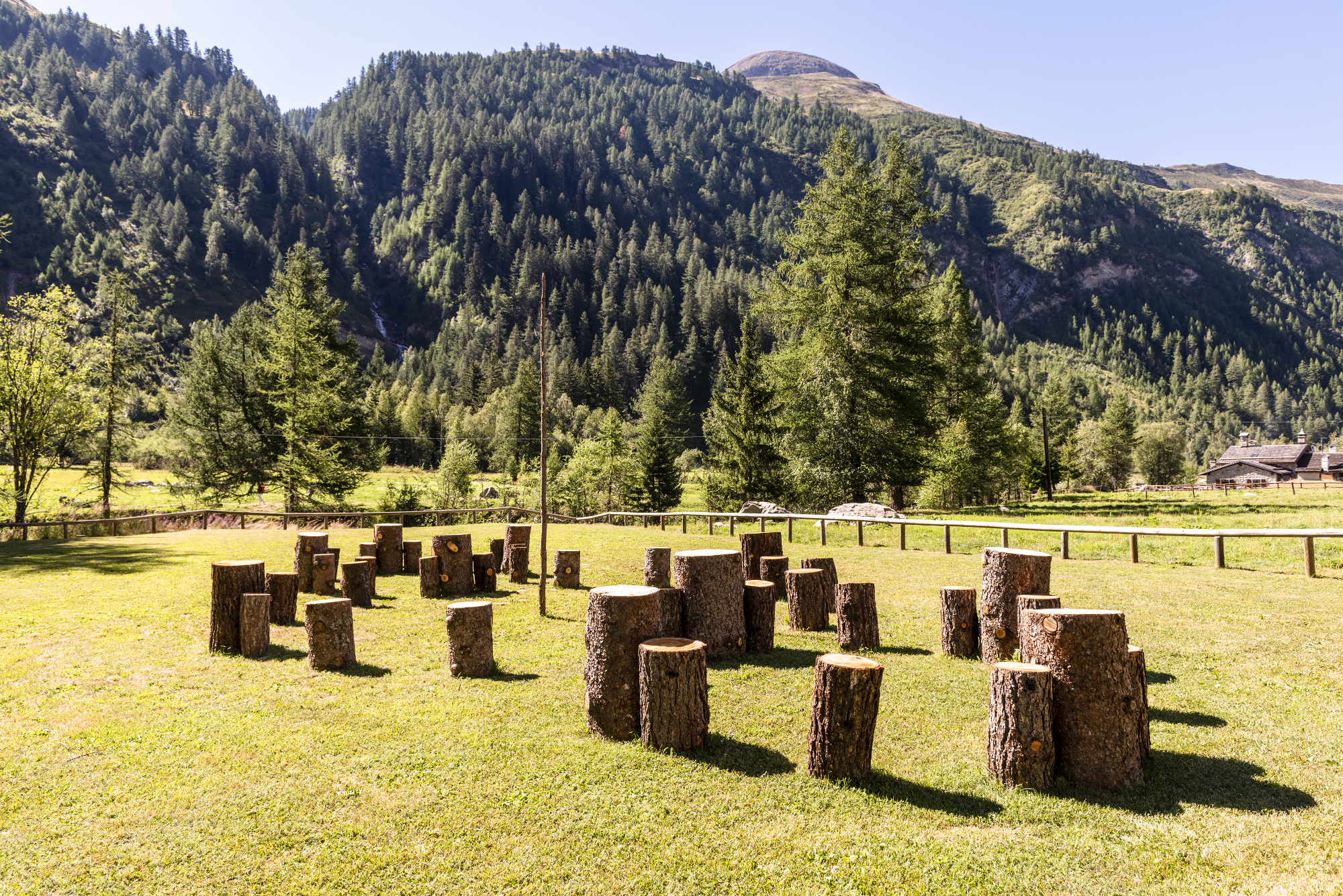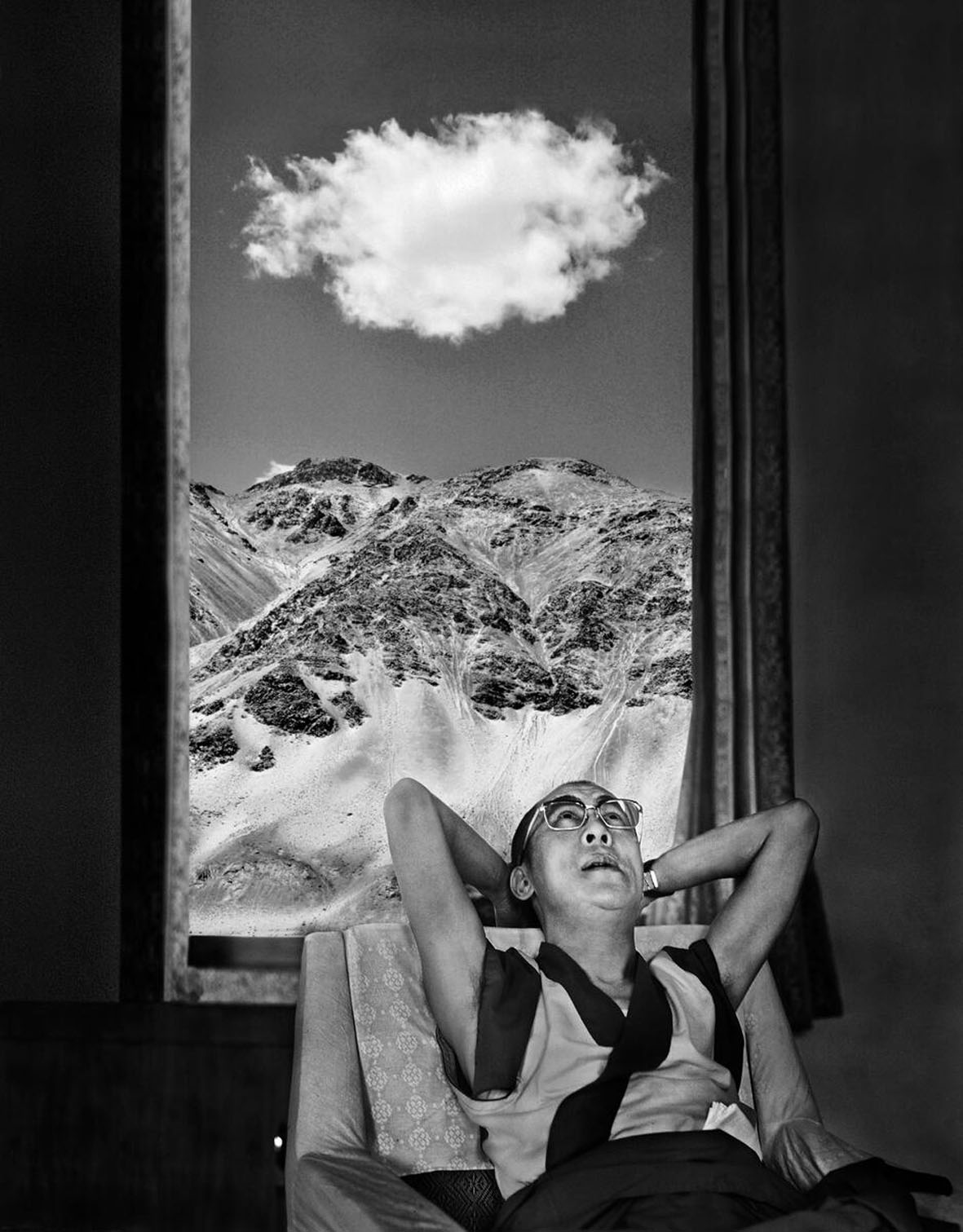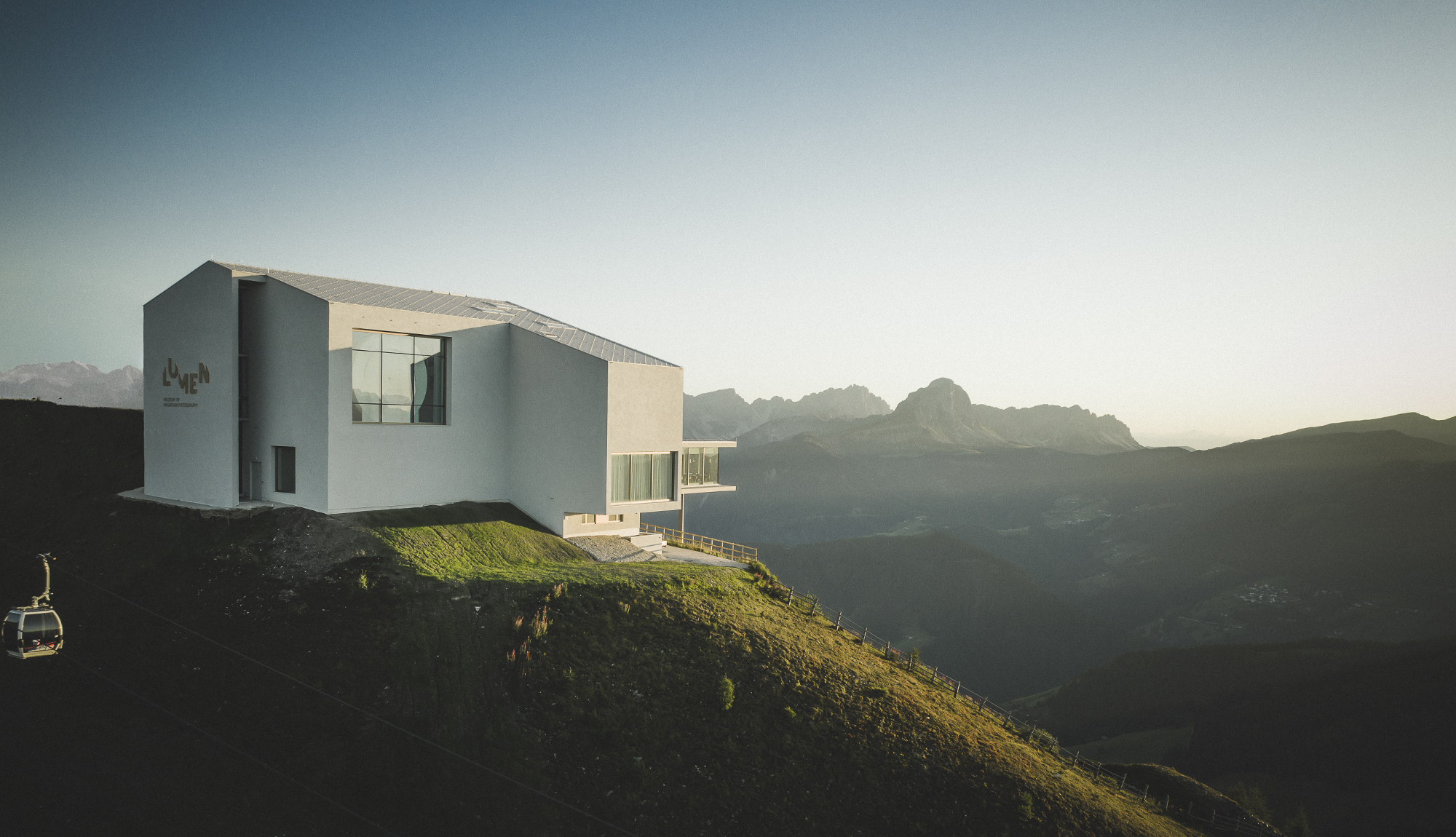Michelangelo Pistoletto, The Third Paradise | Photo: © Giacomo Buzio | Courtesy of Courmayeur Mont Blanc
At the foot of his majesty, Mont Blanc, in one of the most evocative valleys of the Alps, a theory of spruce trunks alternating on logs with mirrored steel discs, connects heaven and earth, weaving the womb of a new humanity.
Don’t worry, no trees have been cut down to give life to Michelangelo Pistoletto’s new installation, a powerful symbol of peace and regeneration, destined to last, according to the artist’s will, at least 15 years, and to become one of the Terzo Paradiso Embassies.
There is not only Val Ferret to frame art which, especially in summer, transforms many mountain resorts into authentic open-air museums. From the evocative rooms of Lumen to the Gherdëina Biennale, here are four exhibitions to be discovered at high altitude.
Michelangelo Pistoletto makes a stop in Courmayeur
Val Ferret, the alpine valley of the Aosta Valley north of the Courmayeur basin, becomes the ambassador of the cultural project with which Michelangelo Pistoletto spreads a powerful symbol of peace and regeneration around the world. Visitors will be able to admire the 54-meter-wide installation, designed to last at least 15 years, and built using pre-cut local fir logs. The work was born as a wish for a transformation of society, and embraces the complexity of the existing in a single sign. The logs were placed, and in some cases covered, with mirrored steel discs. From the union between the opposite poles of nature and artifice, the artist creates a space full of potential, destined to generate rebirth.
As Pistoletto explains, the Third Paradise “wants to underline the connection between heaven and earth and its biodiversity, as well as the sense of measure, proportion, harmony, to be applied not only in quantitative but also qualitative and ethical terms. The Third Paradise means the passage to a new level of planetary civilization, indispensable to ensure the survival of mankind “.

Michelangelo Pistoletto, The Third Paradise | Photo: © Giacomo Buzio | Courtesy of Courmayeur Mont Blanc
At the Castle of Caldes, man and the mountains according to Magnum photographers
“Great things are accomplished when men and mountains meet” wrote William Blake.
The exhibition describes the precious results of this fruitful union Living at the top. Men and mountains by Magnum photographers. From Robert Capa to Steve McCurryin progress until 9 October at the Castle of Caldesthe imposing Trentino manor at the entrance to the Val di Sole.
On the other hand, the mountain has always had multiple meanings for humanity. Lived or abandoned, exploited, conceived as a barrier, now as a refuge, it has guarded lives and stories. The relationship between the mountain, observed, experienced and told by the great interpreters of the Magnum Photos Agency, founded in 1947, and its inhabitants runs through the approximately one hundred photographs that explore different aspects of this relationship between man and nature. If people, with their stories and professions come forward in the shots of Steve McCurry, Inge Morath, Susan Meiselas, Ferdinando Scianna, the theme of tourism and its many implications emerges, between lights and shadows, in the photographs of Martin Parr and in the irony of Jean Gaumy.
The testimonies of ancient civilizations, immortalized by Bruno Barbey, yield to modern infrastructures at the service of tourism and the new needs of living in the mountains with photos by René Burri. The photographs of Alex Majoli and Christopher Anderson are dedicated to mountain conflicts, while the spiritual dimension emerges from the contributions of authors such as Chris Steele-Perkins and Raghu Rai.

The Dalai Lama, Ladakh. INDIA. 1976 © Raghu Rai / Magnum Photos
In Ortisei to discover the Gherdëina Biennale
Installations, sculptures, performances, sound pieces, textile works wink at the unique landscape of Val Gardena and the lush nature of Ortisei. Until 25 September, anyone who decides to spend their holidays in the unique setting of the Unesco World Heritage Site of the Dolomites, Ortisei and the surrounding landscape of Gherdëina / Val Gardena, reveal Persones Personsthe eighth edition of the Gherdëina Biennale curated by Lucia Pietroiusti and Filipa Ramos.
“Persones Persons it moves along two lines – explain the curators -. The first takes into consideration the forms of personality, legal and otherwise, of nature and the landscape, asking how artistic expressions can contribute to the recognition of the rights of the Earth and to the reduction of barriers. The other deals with ancient and future memories of the paths of people, animals, plants and materials through systems of migration, seasonal displacement and transhumance in the region and its landscapes. How they form and constitute each other in a continuous process of influence and harmony. ”
The guests of the Biennale Gherdëina will be entertained by a rich public program aimed at adults and children, including wood carving workshops and walks in the woods to discover the history of the Dolomites, the plants and animals that inhabit it and the sounds that characterize it. The complete calendar is available on www.biennalegherdeina.it.

Alex Cecchetti, PATH, 2022 | Photo: © Tiberio Sorvillo | Project supported by the Italian Council (10th edition, 2022) by the Directorate General for Contemporary Creativity of the Italian Ministry of Culture
The black and white shots of Anja Manfredi on display at Lumen
We ideally reach an altitude of 2275 meters to enter the panoramic rooms of Lumen, the evocative mountain museum housed in the former mountain station of the Plan de Corones cable car, which is definitely worth a visit.
Here, in the magical setting of the Dolomites, suspended over the Ahrntal valley, from 28 August to 31 October visitors will be able to browse the black and white analogue shots of the Austrian photographer Anja Manfredi which intertwines a wide variety of associations with the Atlas concept. The exhibition is the result of a stimulating research that links unconventional relationships between mountain landscapes, mythology, art and cultures beyond space-time boundaries. This complex repertoire of themes is declined through different facets: from the mountain range in North West Africa to the titan of Greek mythology, condemned by Zeus to support the celestial vault, passing through the so-called atlases, the decorative elements in the form of pillars found in the caryatids or in the korai their female counterpart.

Lumen | Photo: © manuelkottersteger.com | Courtesy Lumen
![]() Read also:
Read also:
• Living high up. In the mountains with Magnum photographers

